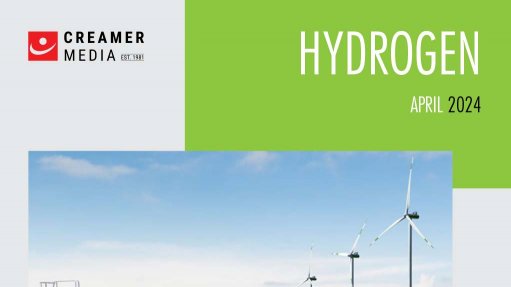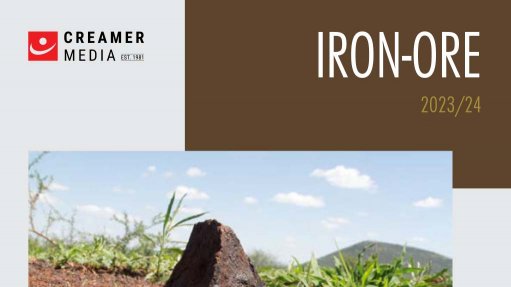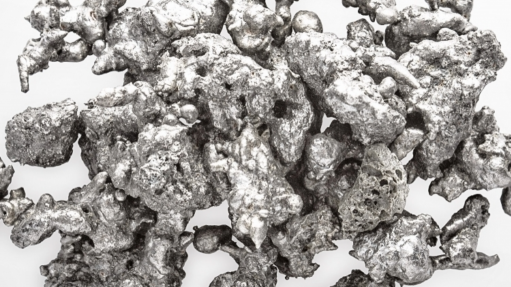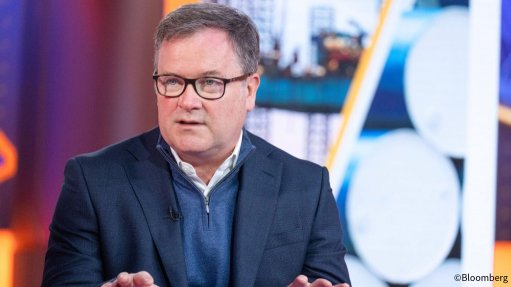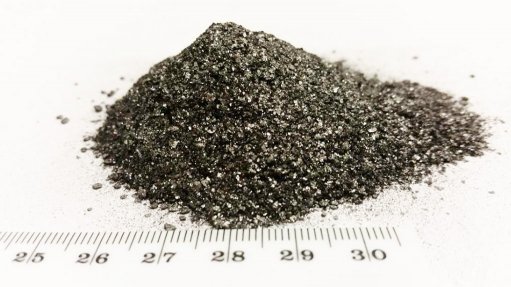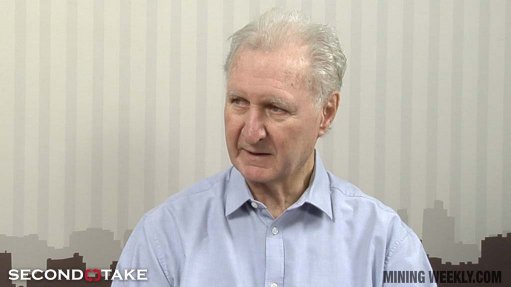WPIC lowers platinum surplus forecast, notes healthy demand
The World Platinum Investment Council (WPIC) has adjusted its platinum supply forecast for this year downward from a 375 000 oz surplus to a 345 000 oz surplus.
The WPIC stated in its latest Platinum Quarterly report, released on Friday, that refined production should grow by 5% this year, as some mining projects ramp up, but mostly owing to the refining of metal built up in the processing pipeline in 2018.
Recycling is forecast to grow by 3% as an increase in platinum recovered from autocatalysts more than offsets a decrease in jewellery recycling owing to the low platinum price.
The WPIC reports that total supply and mine supply of platinum in the second quarter of the year were 1% lower year-on-year and 2% lower year-on-year, respectively. This was owing to pipeline movements in Russia and South Africa.
The WPIC expects refined output from south Africa, excluding stock releases, to be about 5 000 oz less year-on-year this year, as the ramp-up in new projects is more than offset by the expected reduction in yield in mature, high-cost operations.
Inclusive of one-off stock releases, the country’s refined platinum production is likely to grow by 5% year-on-year.
Meanwhile, the WPIC predicts demand for this year will be 9% higher year-on-year, owing to an increase in investment demand, which should offset lower automotive and jewellery demand.
The substantial increase in investment demand by institutions in the first half of the year is likely to continue into the medium-to-long term, which will tighten the market and lead to platinum price increases.
The council says South Africa remains at risk of power outages and industrial action related to wage negotiations that are under way, which could disrupt mine supply.
Moreover, to avoid massive fleet carbon dioxide fines – stemming from strict emissions regulations in Europe – automakers are expected to promote diesel cars, which may lead to higher diesel car sales, and, therefore, increase demand for platinum.
The WPIC reports that total demand had increased by 4% year-on-year in the second quarter of the year, which was mainly owing to exchange-traded funds moving from net selling to net buying.
The council adds that this more than compensated for lower autocatalyst and jewellery demand in the quarter.
The WPIC says continued strong institutional demand this year may reflect recognition by seasoned and new platinum investors of the metal’s undervaluation and resurgent demand growth potential.
Comments
Press Office
Announcements
What's On
Subscribe to improve your user experience...
Option 1 (equivalent of R125 a month):
Receive a weekly copy of Creamer Media's Engineering News & Mining Weekly magazine
(print copy for those in South Africa and e-magazine for those outside of South Africa)
Receive daily email newsletters
Access to full search results
Access archive of magazine back copies
Access to Projects in Progress
Access to ONE Research Report of your choice in PDF format
Option 2 (equivalent of R375 a month):
All benefits from Option 1
PLUS
Access to Creamer Media's Research Channel Africa for ALL Research Reports, in PDF format, on various industrial and mining sectors
including Electricity; Water; Energy Transition; Hydrogen; Roads, Rail and Ports; Coal; Gold; Platinum; Battery Metals; etc.
Already a subscriber?
Forgotten your password?
Receive weekly copy of Creamer Media's Engineering News & Mining Weekly magazine (print copy for those in South Africa and e-magazine for those outside of South Africa)
➕
Recieve daily email newsletters
➕
Access to full search results
➕
Access archive of magazine back copies
➕
Access to Projects in Progress
➕
Access to ONE Research Report of your choice in PDF format
RESEARCH CHANNEL AFRICA
R4500 (equivalent of R375 a month)
SUBSCRIBEAll benefits from Option 1
➕
Access to Creamer Media's Research Channel Africa for ALL Research Reports on various industrial and mining sectors, in PDF format, including on:
Electricity
➕
Water
➕
Energy Transition
➕
Hydrogen
➕
Roads, Rail and Ports
➕
Coal
➕
Gold
➕
Platinum
➕
Battery Metals
➕
etc.
Receive all benefits from Option 1 or Option 2 delivered to numerous people at your company
➕
Multiple User names and Passwords for simultaneous log-ins
➕
Intranet integration access to all in your organisation




